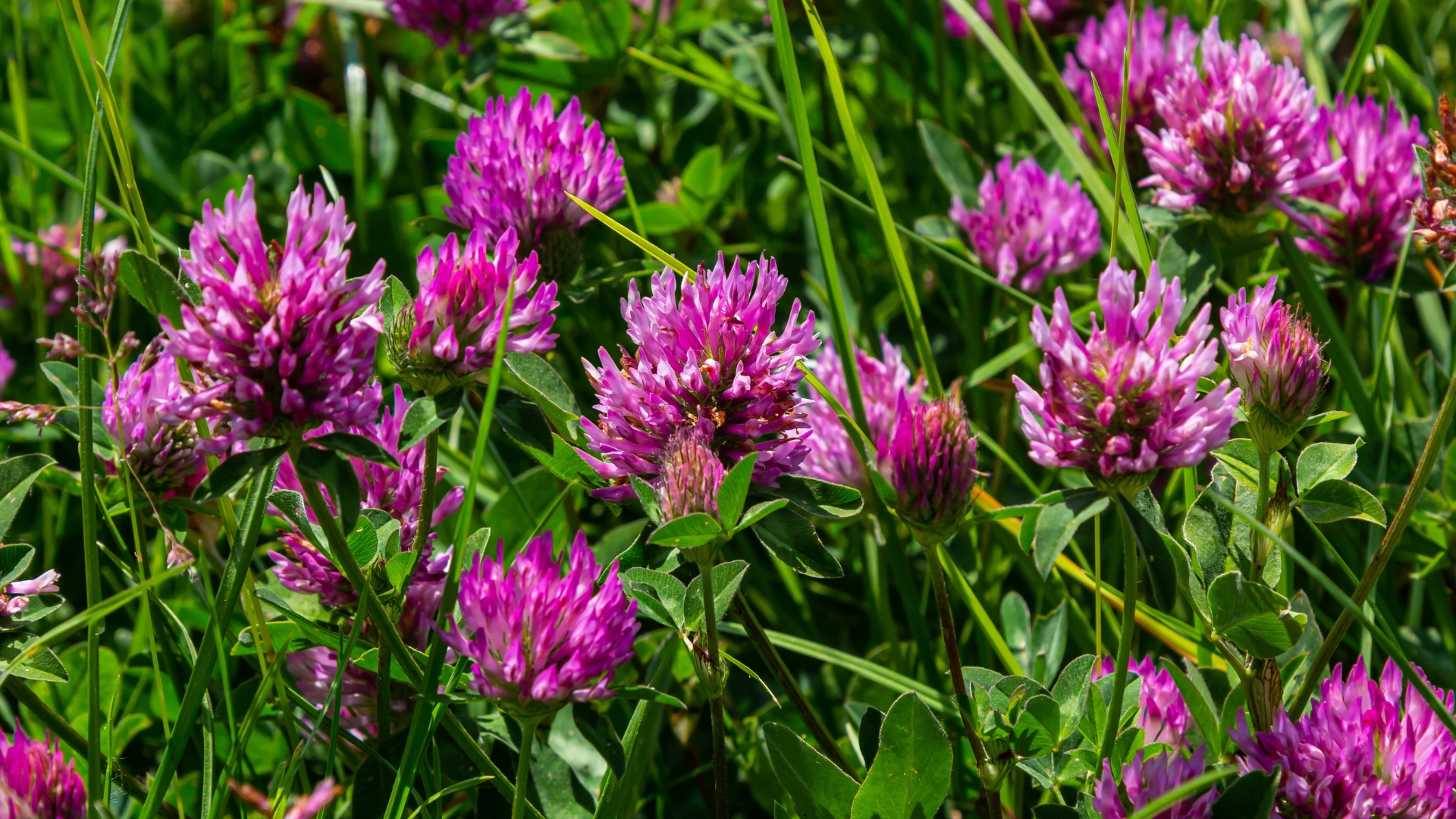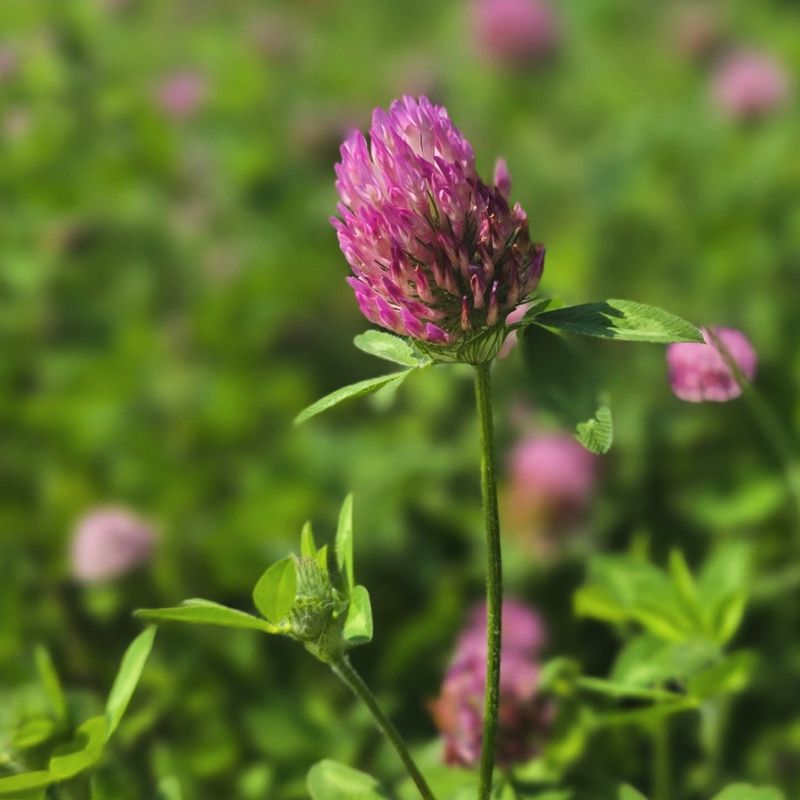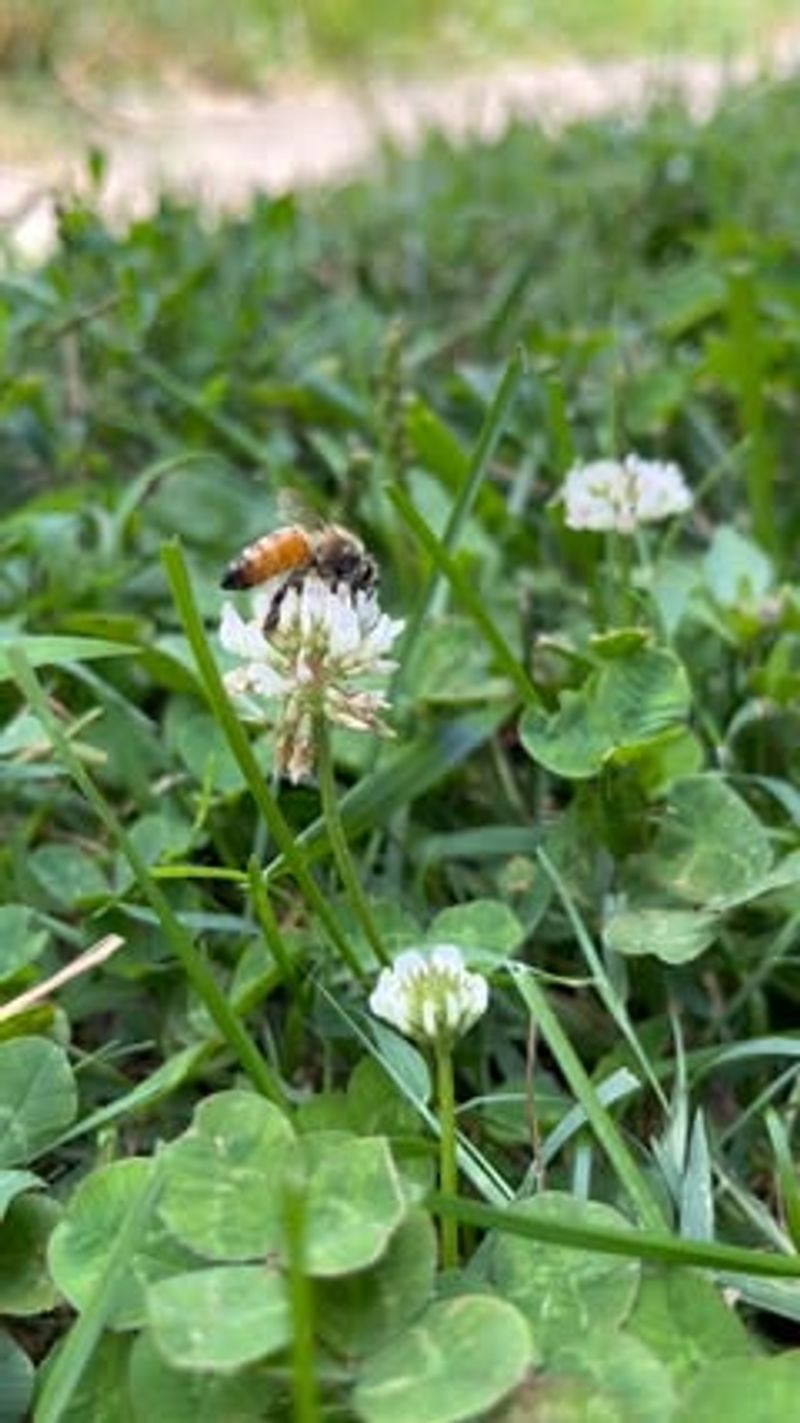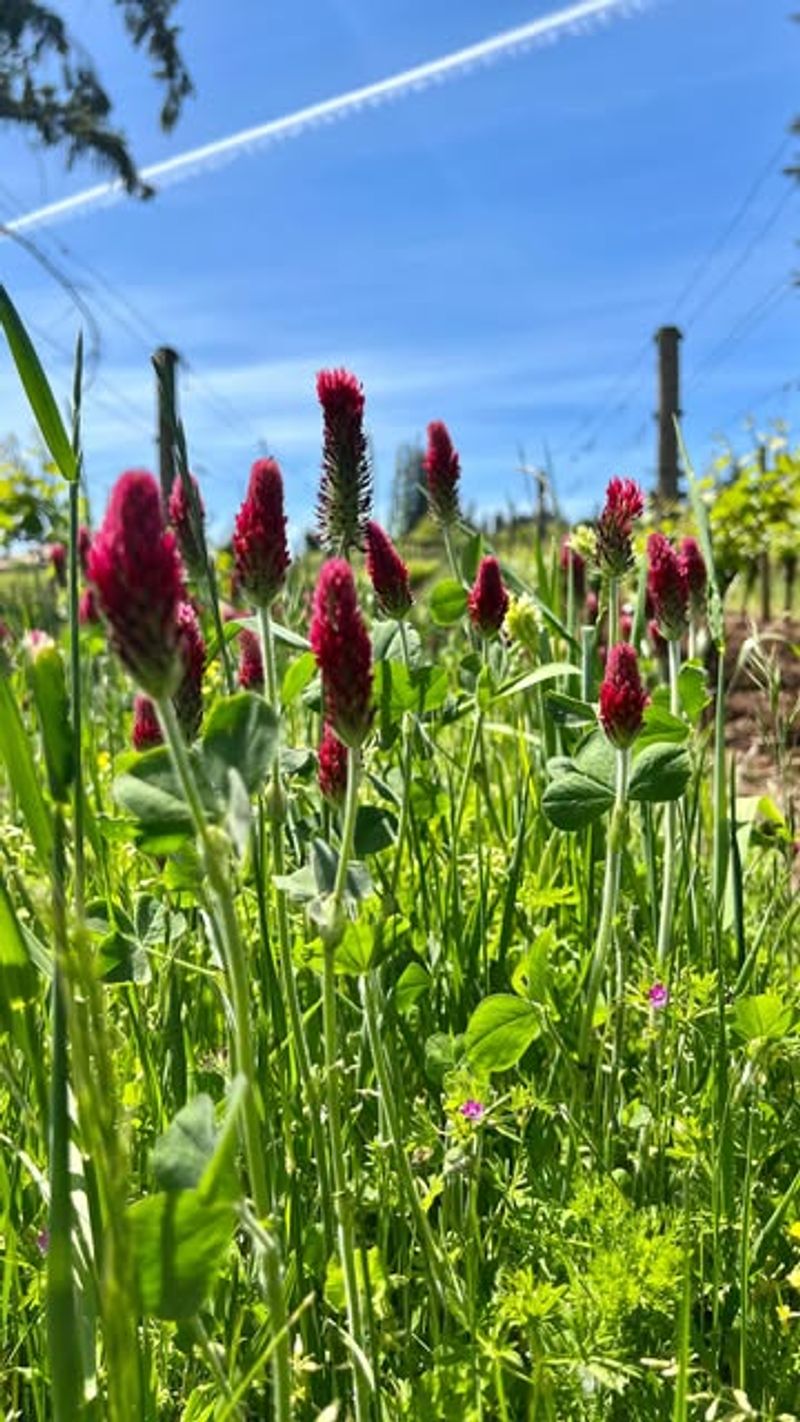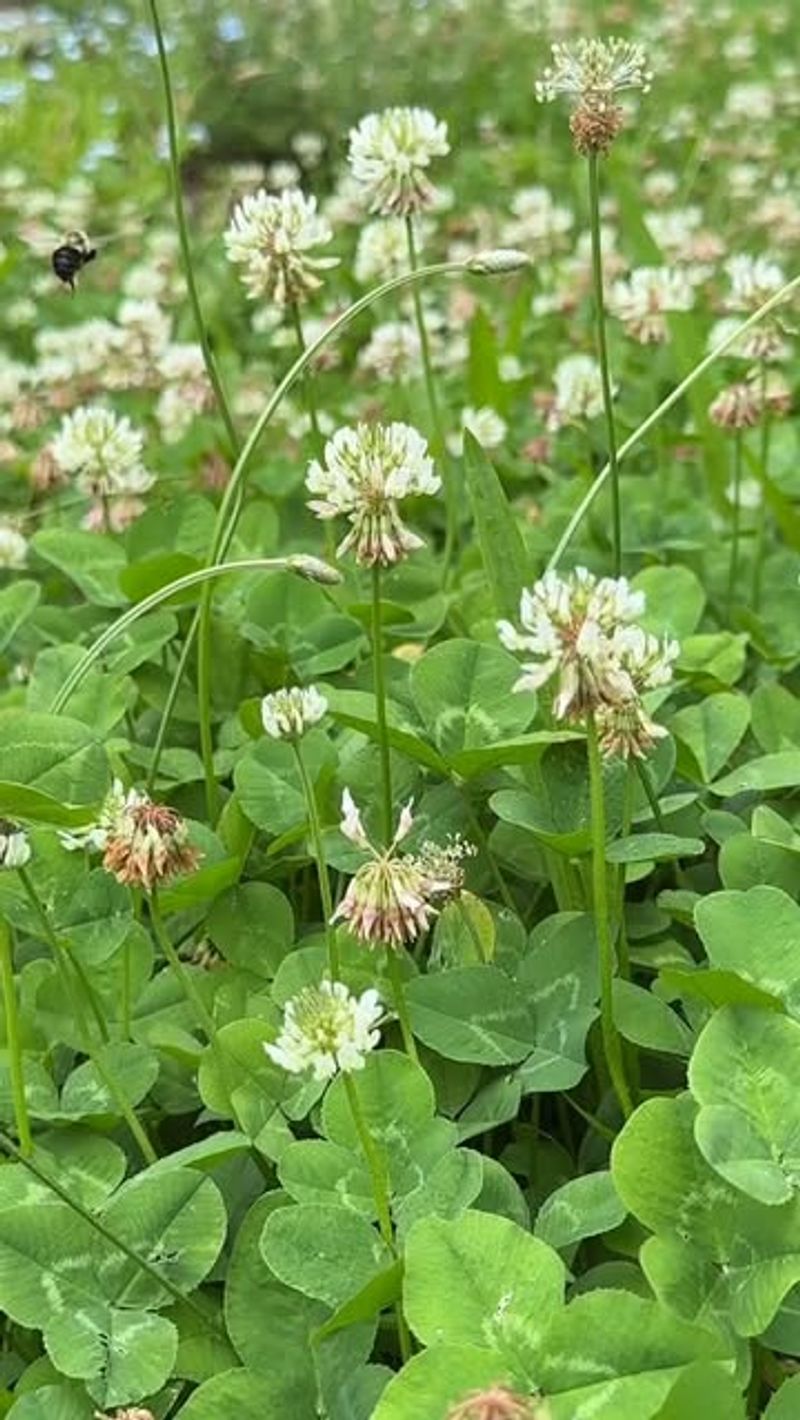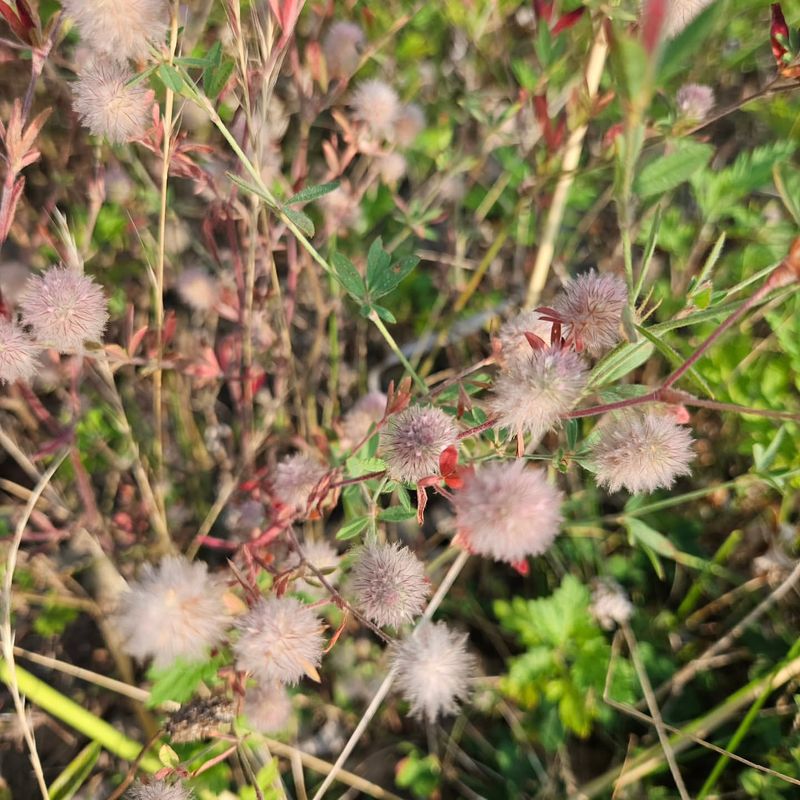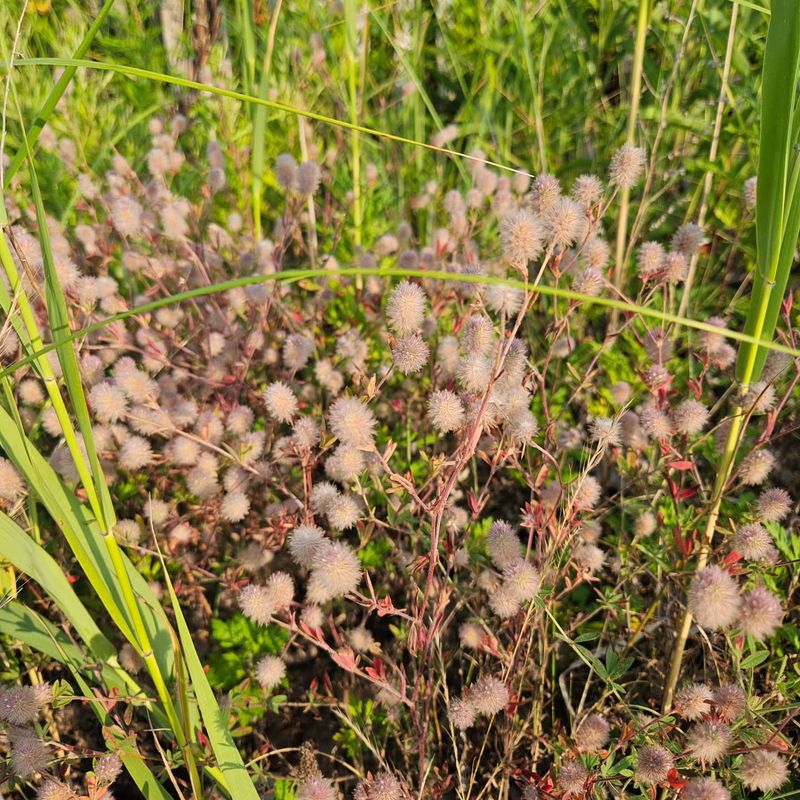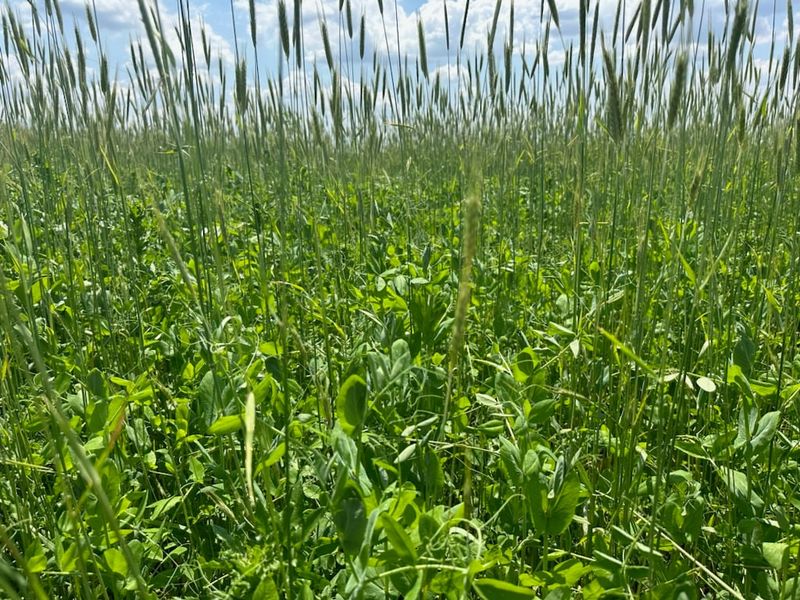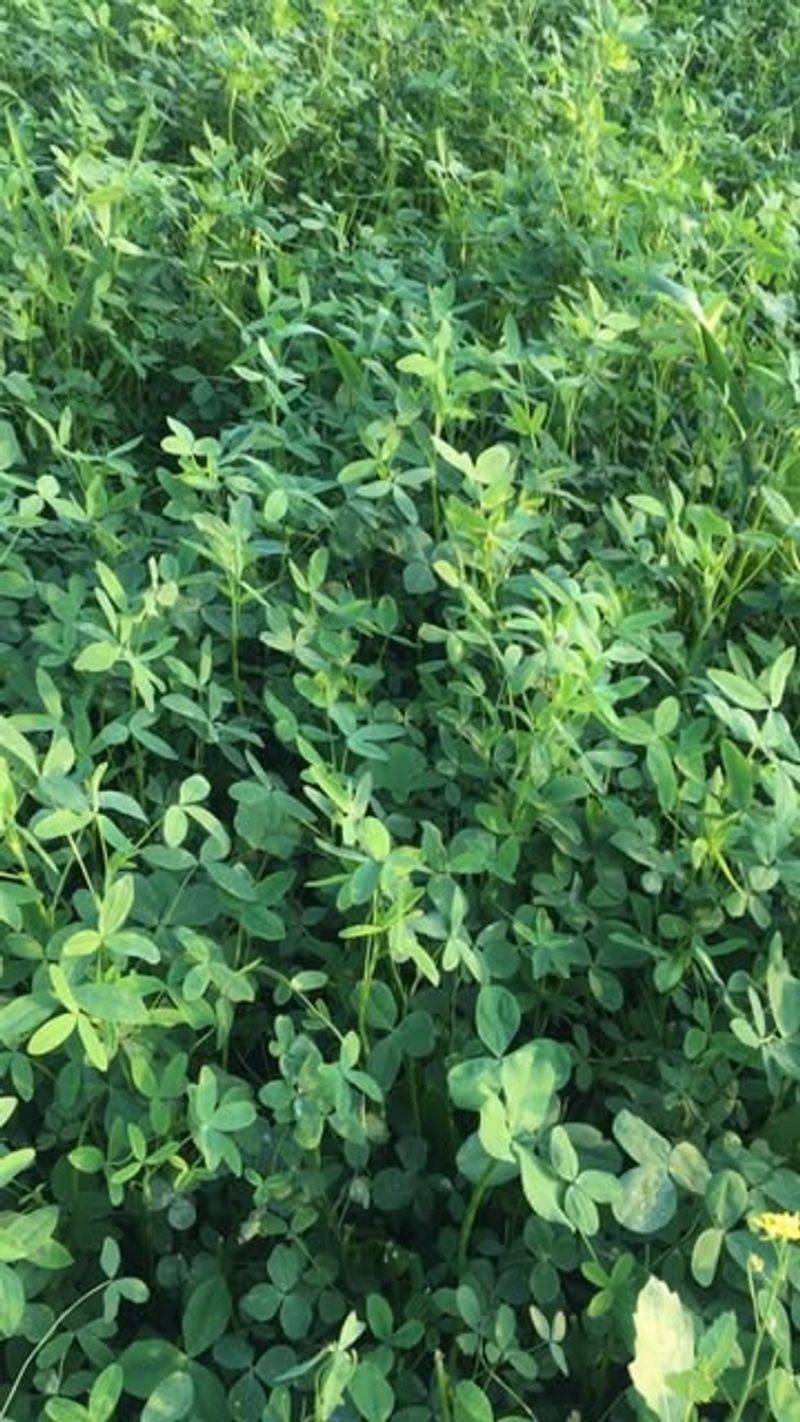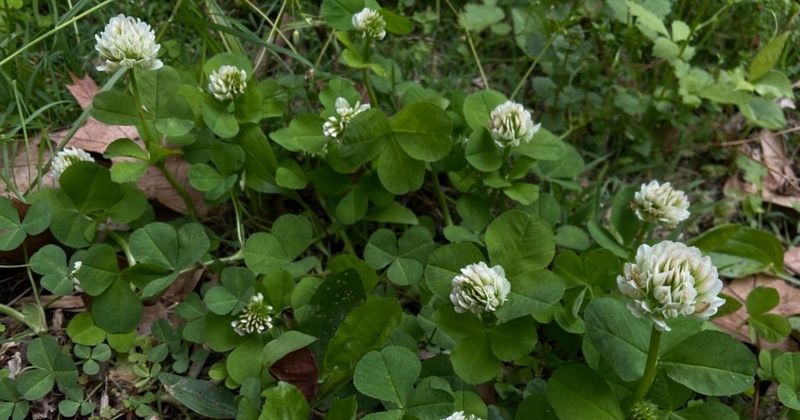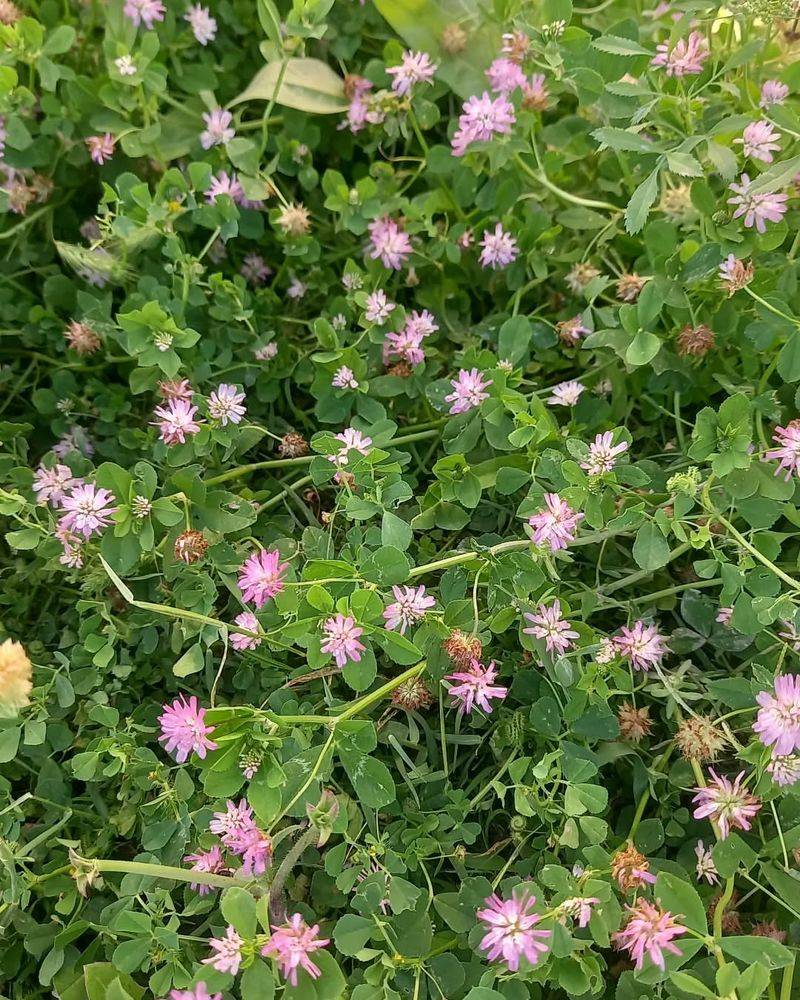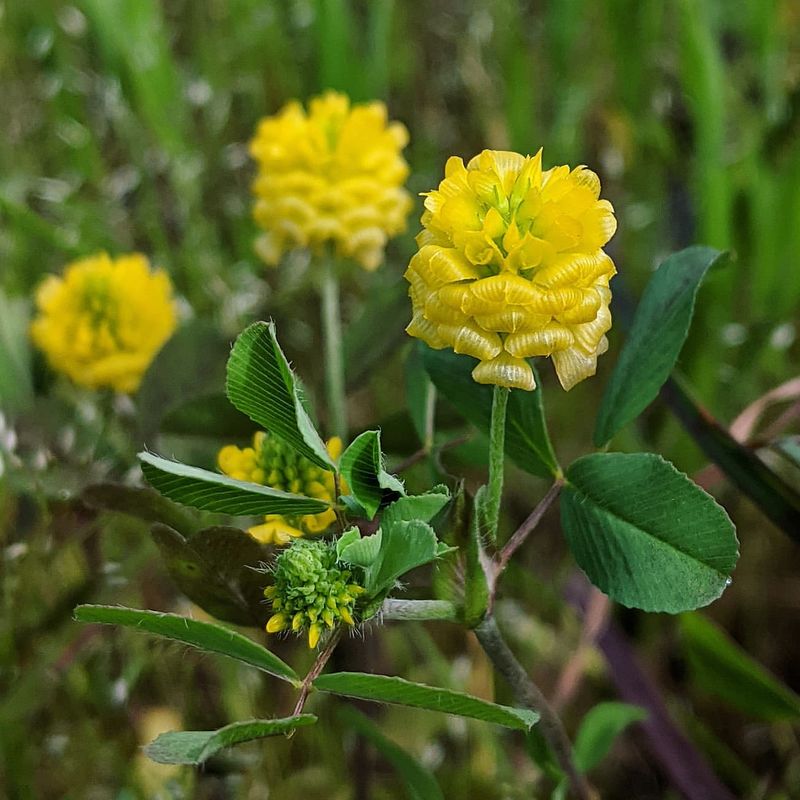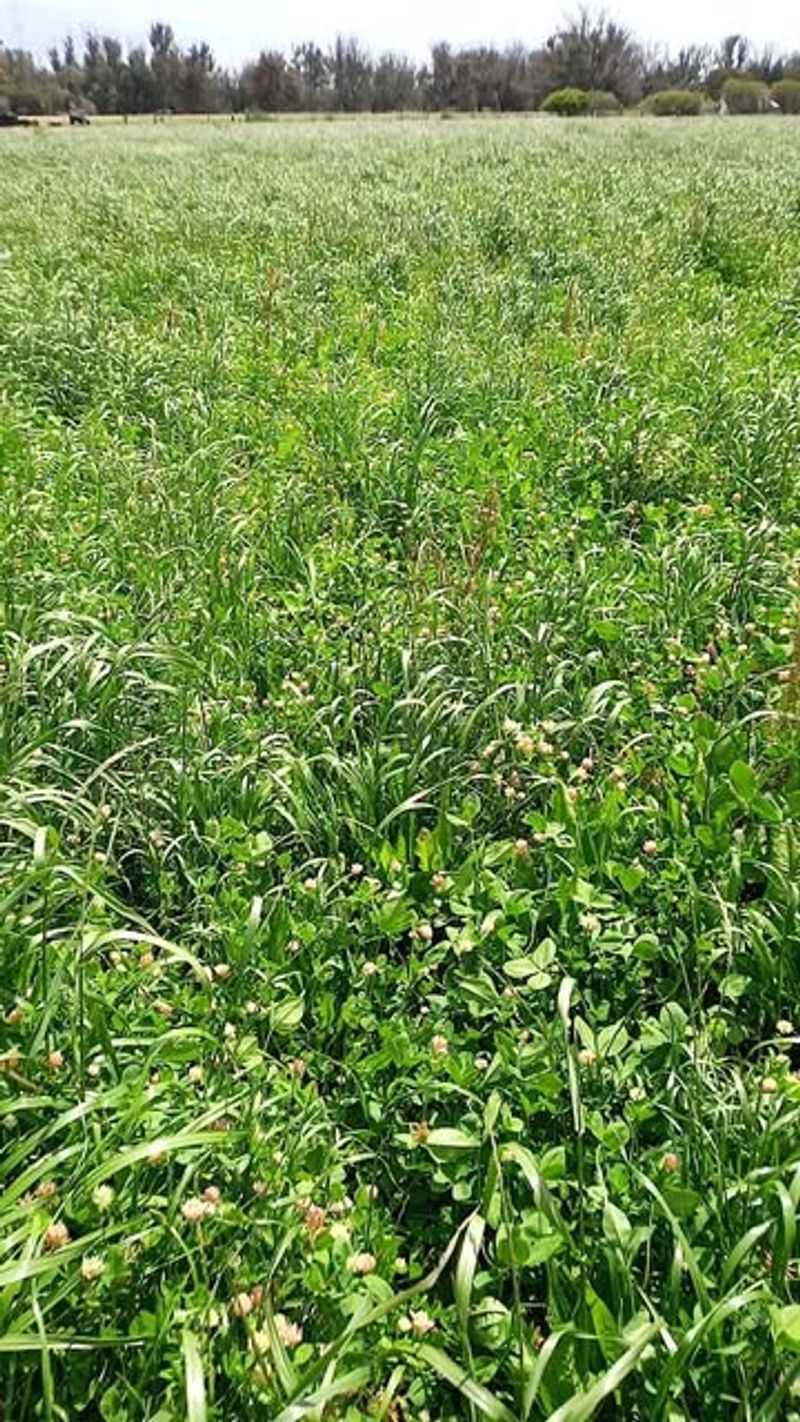Clover isn’t just a soft ground cover — it’s also a welcome stop for bees, butterflies, and other pollinators. In Boston, certain varieties can handle the local weather while providing steady nectar and pollen.
Some stay low and spread quickly, while others grow taller and bloom in different shades. Mixing a few types can keep your garden buzzing through the season.
These are some clover varieties that might fit well in a Boston pollinator-friendly yard.
1. Red Clover
The fuzzy pink-purple blooms of red clover are irresistible to bumblebees. Massachusetts gardeners love how this hardy perennial thrives even in poorer soils while fixing nitrogen naturally.
Red clover reaches about two feet tall, creating stunning meadow-like patches in sunny spots. Its deep roots help prevent erosion on slopes, making it practical and beautiful for Boston’s varied landscapes.
2. White Dutch Clover
You’ve probably spotted this low-growing beauty in Boston parks. The rounded white flower heads speckle lawns throughout summer, offering continuous nectar sources for honeybees and small butterflies.
Hardy enough for New England winters, white Dutch clover withstands foot traffic and drought once established. Many Bay State gardeners use it as an eco-friendly lawn alternative that requires less mowing and no fertilizer.
3. Crimson Clover
The stunning crimson spikes make this annual clover a showstopper in Massachusetts gardens. Its brilliant red blooms appear in late spring, creating dramatic swaths of color while feeding native bees.
Boston gardeners often plant it in fall as a cover crop that suppresses weeds and improves soil. The deep roots break up compacted areas, making it perfect for rejuvenating tired garden beds before spring planting.
4. Alsike Clover
Perfect for those tricky wet spots in Boston gardens, alsike clover thrives where other plants struggle. The delicate pink-tinged white flowers attract diverse pollinators from early summer through fall.
Massachusetts gardeners appreciate its tolerance for clay soils and partial shade. Alsike establishes quickly, making it ideal for erosion control along the edges of ponds or in low-lying areas of your yard.
5. Strawberry Clover
Named for its charming pink seedheads that resemble tiny strawberries, this clover creates an enchanting ground cover. Boston’s coastal gardeners value its exceptional salt tolerance and ability to handle occasional flooding.
The creeping stems form a dense mat that suppresses weeds naturally. Massachusetts butterfly enthusiasts plant strawberry clover to support various species, including the eastern tailed-blue butterfly that depends on clovers for its lifecycle.
6. Yellow Sweet Clover
Towering up to five feet tall, yellow sweet clover creates a dramatic vertical element in Massachusetts pollinator gardens. The fragrant yellow flower spikes bloom throughout summer, attracting beneficial wasps and native bees.
Boston community gardeners use this biennial as a soil improver between vegetable rotations. Its deep taproot breaks up compacted soil while fixing nitrogen, essentially providing free fertilizer for next season’s crops.
7. Zigzag Clover
Named for its distinctive stem growth pattern, zigzag clover thrives in Boston’s partially shaded woodland gardens. The rosy-purple flower heads appear in early summer, offering nectar when many other plants aren’t blooming.
Massachusetts native plant enthusiasts appreciate that this European introduction doesn’t spread aggressively. Its tolerance for dappled light makes it perfect for brightening those tricky spots under deciduous trees where grass struggles to grow.
8. Rabbitfoot Clover
The fuzzy, elongated seedheads of rabbitfoot clover resemble tiny rabbit’s feet, adding whimsical texture to Massachusetts gardens. This annual clover produces subtle pink-tinged flowers that small native bees absolutely adore.
Boston urban gardeners find it self-seeds reliably without becoming invasive. Its drought tolerance makes rabbitfoot perfect for those hot, dry spots along sidewalks or in hellstrips where other plants struggle to survive the challenging conditions.
9. Kura Clover
Relatively new to Massachusetts gardens, kura clover offers exceptional cold hardiness perfect for Boston’s winters. The large white flower heads resemble those of white Dutch clover but on a more robust plant with thicker stems.
Its rhizomatous growth creates a dense, weed-suppressing mat that can handle light foot traffic. Bay State gardeners value kura for its longevity – once established, this perennial clover can thrive for over a decade with minimal maintenance.
10. Berseem Clover
Fast-growing berseem clover has become a favorite among Boston’s community gardeners. The hollow stems topped with white flowers can reach two feet in just weeks, quickly attracting honeybees and providing green manure.
Massachusetts vegetable growers use this annual as a quick cover crop between plantings. Berseem doesn’t overwinter in New England, making it perfect for situations where you want nitrogen-fixing benefits without long-term commitment to a perennial clover.
11. Buffalo Clover
Once nearly extinct, this native North American clover is making a comeback in Massachusetts native plant gardens. The whitish-purple flower heads attract specialized native bees that co-evolved with this species.
Boston conservationists value buffalo clover for its historical significance and wildlife benefits. Though somewhat challenging to establish, this rare native rewards patient gardeners with its unique heritage value and ability to support pollinators found nowhere else in New England.
12. Persian Clover
The hollow stems and large rosy-purple flower heads make Persian clover stand out in Massachusetts gardens. This annual grows quickly, providing early-season nectar for bees emerging from winter hibernation.
Boston community gardeners use it as a living mulch between vegetable rows. Persian clover tolerates wet conditions better than most other clovers, making it ideal for those low spots in your yard that collect moisture after New England’s famous spring rains.
13. Hop Clover
The tiny yellow flowers of hop clover create delicate splashes of color in Massachusetts lawn alternatives. Despite its diminutive size, this annual attracts numerous small pollinators and adds biodiversity to Boston gardens.
Bay State gardeners appreciate how it naturally fills in bare spots without becoming aggressive. Hop clover’s shallow roots make it easy to remove if needed, while its drought tolerance means it thrives in those challenging dry areas where grass constantly struggles.
14. Arrow Leaf Clover
Distinctive arrow-shaped leaves make this clover immediately recognizable in Massachusetts wetland gardens. The white to pale pink flower heads appear in late spring, providing crucial nectar for early-season pollinators.
Boston gardeners with rain gardens find arrow leaf clover thrives in these engineered ecosystems. Its natural affinity for periodically wet soils makes it perfect for areas that experience seasonal flooding – a common challenge in New England’s variable climate.

